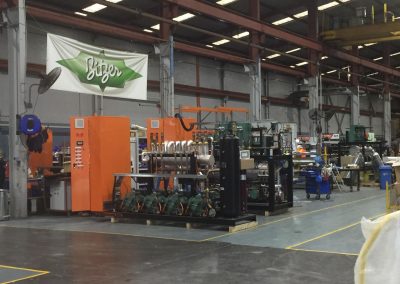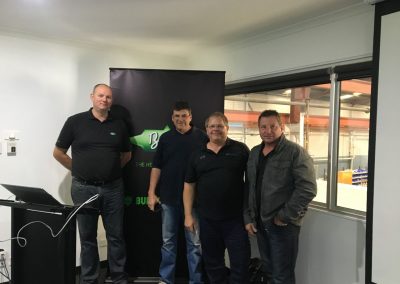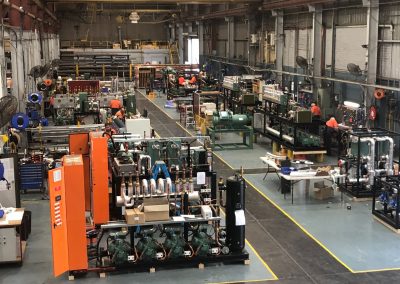Last week I had the opportunity, along with our service manager and commissioners, to attend Bitzer’s training course on their transcritical CO2 systems and a walk through their production line. The training course ran us through the basics of CO2 – why it’s used as a refrigerant and some of its limitations e.g. warmer ambient temperatures and higher operating pressures.
With the world pushing for natural refrigerants CO2 is arguably one of the better options due to its non-toxic, non- flammable characteristics and very good heat transfer coefficient. CO2 isn’t without its limitations though; high ambient temperatures is one of them. All refrigerants have a decline in efficiency with higher condensing pressures/temperatures however CO2 has one of the largest drops.
It was pretty interesting watching a video of the different phase changes CO2 goes through – between its triple and critical point. A vessel is charged with liquid CO2, the pressure is dropped rapidly and BOOM the liquid CO2 almost instantly turns to a solid (dry ice). The vessel pressure is then raised – you can see the solid dry ice boil off to a gas, then liquid and once pushed past its critical point, CO2 sits in equilibrium, now a supercritical fluid! (expands to fill its container yet has the properties of a fluid).
That being said there are a number of safety devices in place to keep the CO2 between these two points, whether it be a backup cascade system to cool the liquid using another refrigerant or parallel compression where flash gas is pulled from the top of the receiver and recirculated back into the system or mechanical venting of the receiver. All of these methods are trying to drop the receivers pressure/temperature to design conditions.
CO2 can be intimidating due to its characteristics but like most things if you do the training, take your time and know the limits you will be fine.





